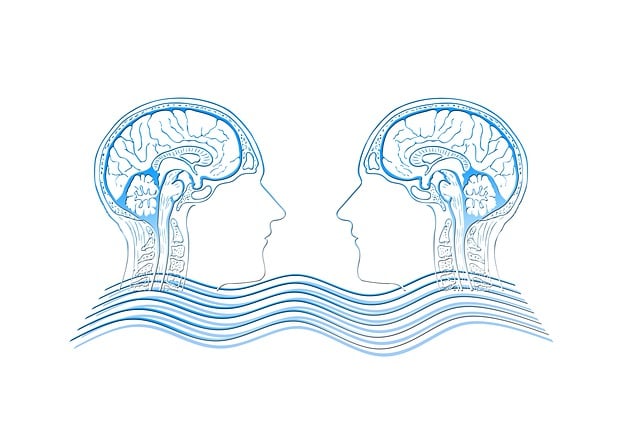Mold, a natural decomposer, poses health risks due to mycotoxins produced by some varieties. It thrives in damp, humid conditions, commonly found in water-prone areas. Recognizing potential dangers and understanding growth patterns is crucial for human health protection. Preventative measures include regular cleaning, proper ventilation, and addressing water intrusion. Exposure can cause mild to severe allergies and, with prolonged high-level exposure, lead to 'mold poisoning'. Subtle signs like coughing, wheezing, nasal congestion, eye problems, and skin rashes indicate potential exposure, requiring medical attention for confirmation and management. Addressing root causes through improved ventilation is essential to avoid future mold growth.
Can mold exposure trigger allergic reactions? It’s a question that arises as we navigate the often unseen dangers lurking in our environments. This article delves into the complex relationship between mold and allergies, exploring how mold presence can impact sensitive immune systems. From understanding mold’s ubiquitous nature to deciphering the body’s response, we unravel common allergic reactions linked to exposure and highlight crucial mold poisoning signs. Knowing when to seek treatment is essential for managing health risks associated with this silent environmental threat.
- Understanding Mold and Its Presence in Environments
- The Immune System's Response to Mold Exposure
- Common Allergic Reactions Linked to Mold
- Recognizing Mold Poisoning Signs and Seeking Treatment
Understanding Mold and Its Presence in Environments

Mold is a natural part of our environment, playing a vital role in breaking down organic matter. However, certain types of molds produce toxic compounds known as mycotoxins, which can pose significant health risks. These fungi thrive in damp and humid conditions, making them common residents in environments with water intrusion, such as basements, bathrooms, and areas affected by flooding or leaks. Understanding where mold can be found and recognizing its potential dangers is crucial when considering its impact on human health.
Exposure to mold can lead to a range of allergic reactions, especially for individuals with pre-existing respiratory conditions or compromised immune systems. Symptoms of mold poisoning may include coughing, wheezing, nasal congestion, skin irritation, and even cognitive issues. It’s essential to address visible mold growth and maintain a dry indoor environment to minimize the risks associated with mold exposure. Regular cleaning, proper ventilation, and addressing water issues are key measures in preventing and mitigating mold-related health concerns.
The Immune System's Response to Mold Exposure

When individuals are exposed to mold, their immune systems can react in various ways, especially if there’s a pre-existing allergy or sensitivity. Mold spores, once inhaled, can trigger an inflammatory response in the body. This is because the immune system identifies these foreign invaders as harmful and releases histamine and other chemicals to combat them. As a result, symptoms of allergic reactions such as sneezing, runny nose, itchy eyes, and even respiratory distress may occur.
Prolonged or intense mold exposure can lead to more severe health issues, especially for those with compromised immune systems. The immune system’s overreaction to mold can cause chronic inflammation and potentially contribute to the development of mold poisoning signs, including fatigue, headaches, coughing, and in some cases, neurological symptoms. It’s important to recognize that while many people may experience mild allergies to mold, others might be at higher risk for more severe reactions and should seek medical advice if they suspect ongoing mold exposure.
Common Allergic Reactions Linked to Mold

Mold exposure can lead to a range of allergic reactions, affecting individuals in various ways. Common symptoms include sneezing, runny nose, nasal congestion, and itchy eyes—similar to those experienced during seasonal allergies. However, for sensitive individuals or those with existing respiratory conditions like asthma, mold can trigger more severe responses.
Prolonged exposure to high levels of mold might result in what is often referred to as ‘mold poisoning’ or ‘mycotoxicosis’. This condition can manifest as chronic coughing, wheezing, difficulty breathing, and even memory issues. In some cases, individuals may experience skin rashes, nausea, headaches, and fatigue—signs that indicate a possible allergic reaction to mold. Recognizing these symptoms is crucial, as prompt action and medical advice can help manage and mitigate the effects of mold-related allergies.
Recognizing Mold Poisoning Signs and Seeking Treatment

Recognizing the signs of mold poisoning is crucial for prompt treatment and prevention of further complications. If you suspect mold exposure, look out for symptoms like coughing, wheezing, runny or blocked nose, eye irritation, and skin rashes. These allergic reactions can vary in severity and may persist or worsen over time if not addressed.
Seeking medical attention is essential if you experience any of these mold poisoning signs. A healthcare professional can conduct tests to confirm mold exposure and recommend appropriate treatment. This may include antihistamines, corticosteroids, or other medications to alleviate symptoms. Additionally, addressing the source of mold growth through proper ventilation and environmental remediation is vital to avoid recurrence.
